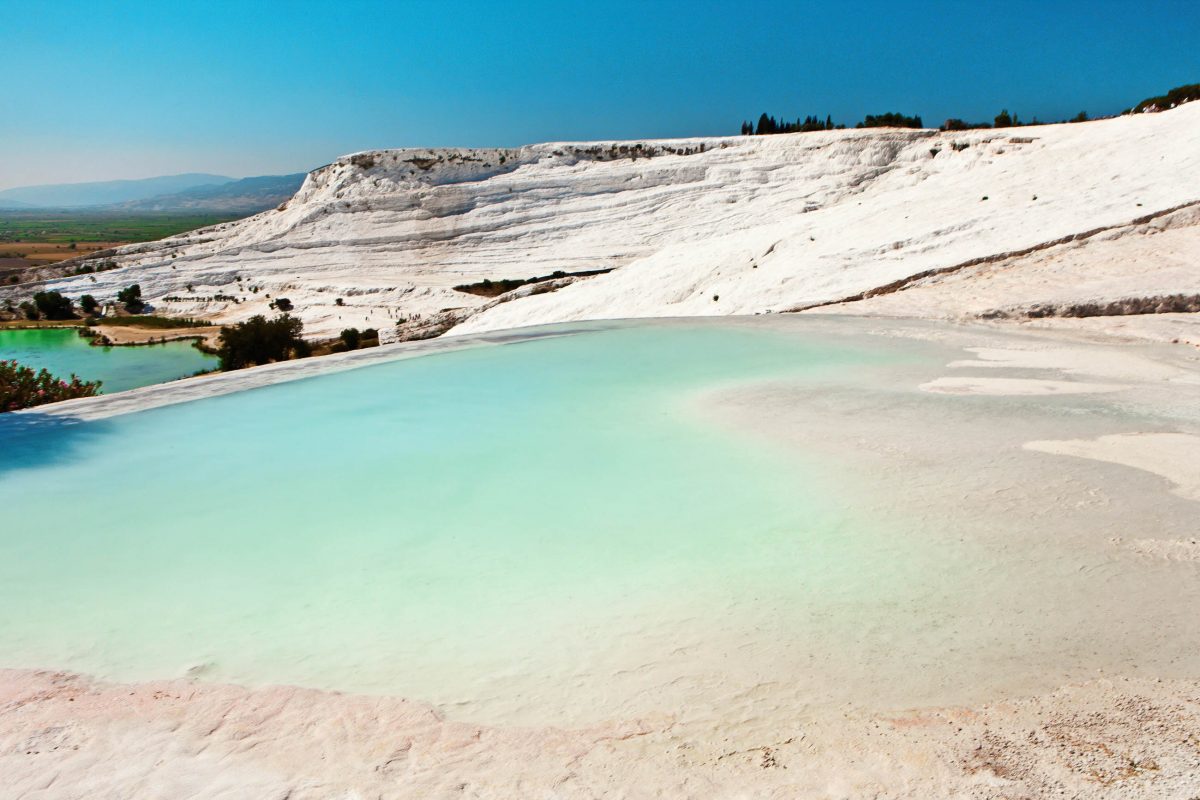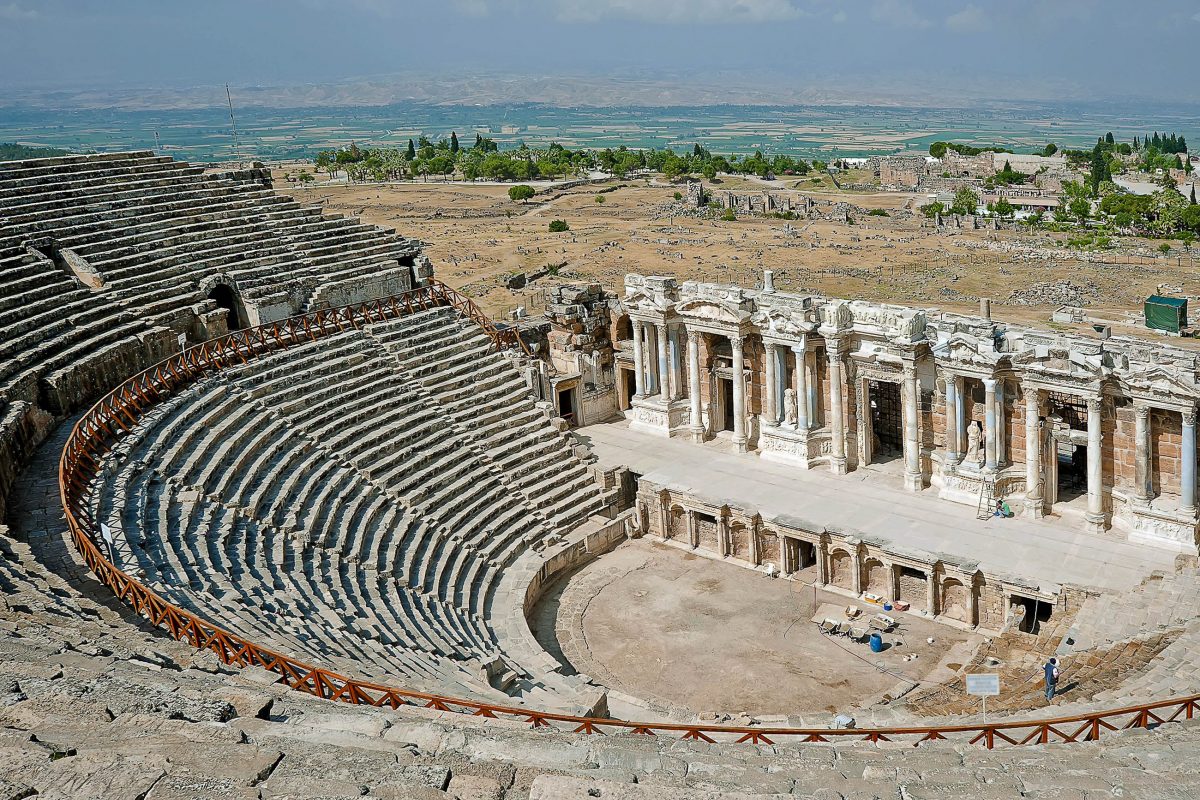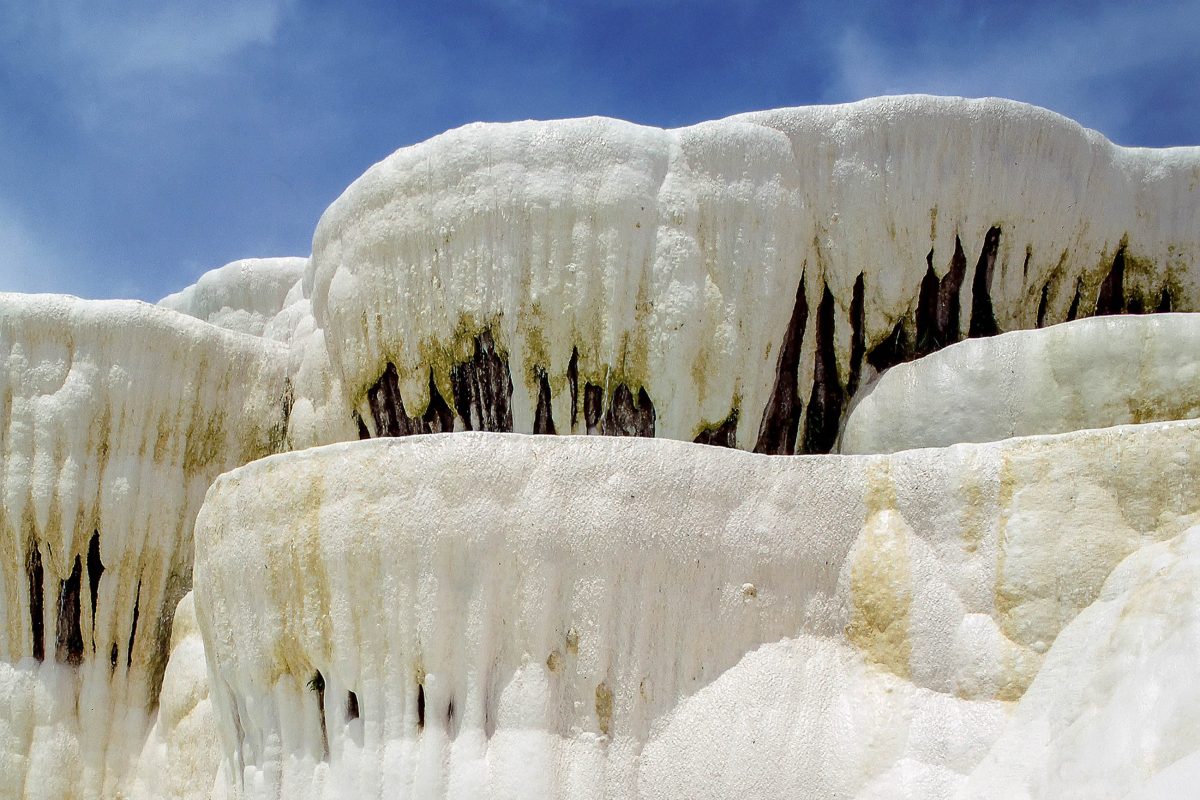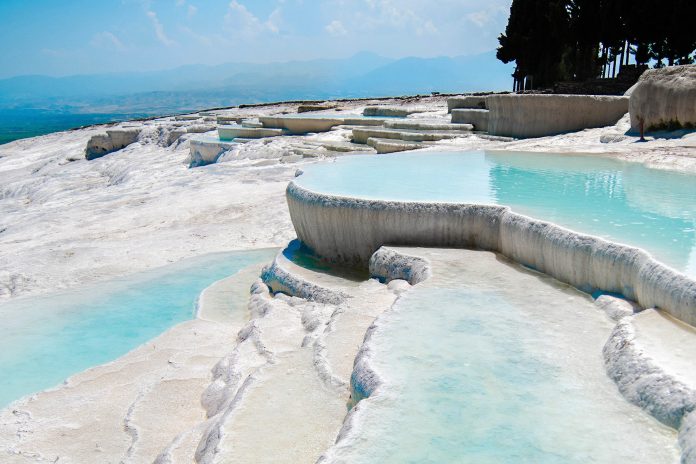Pamukkale ist eine Kleinstadt in der südwestlichen Türkei, die früher Hierapolis genannt wurde. Weltweite Berühmtheit erlangte das Städtchen durch seine spektakulären schneeweißen Kalksinterterrassen und seine altertümlichen Ruinen.
Pamukkale heißt eigentlich Baumwollfestung und bezeichnet heute eine Kleinstadt in der südwestlichen Türkei, die früher Hierapolis genannt wurde. Weltweite Berühmtheit erlangte das Städtchen durch seine spektakulären schneeweißen Kalksinterterrassen. Das faszinierende Naturphänomen zählt zu unseren Top 10 Sehenswürdigkeiten der Türkei.
Inhaltsverzeichnis
BILDER: Pamukkale
Hierapolis wurde Ende des 2. Jahrhunderts von König Eumenes II. eigentlich als Heilbad gegründet und entwickelte sich später zum Umschlagplatz für Wolle. Bereits damals pilgerten die Menschen zu den mineralhaltigen Wasserbecken und badeten in den heißen Quellen von Mutter Erde. Marmorkapitelle und Ruinen des einstigen Quellhauses zeugen von der früheren Bedeutung von Hierapolis.
Besuch von Pamukkale

Erblickt man die Terrassenbecken von Pamukkale des erste Mal, fühlt man sich in eine bizarre Welt versetzt. Türkisblaues Wasser schimmert in schneeweißen Becken, läuft über und bildet surreale Kalkformationen, versteinerte Wälder und kleine Seen und Bäche.
Unter der Sonne erstrahlen die gleich Schwalbennester an den Hang geklebten Becken noch einmal surrealer und man glaubt kaum, dass bei diesen fantastischen Kalkformationen der Mensch seine formenden Finger nicht im Spiel hatte. Vor allem bei Sonnenuntergang ein unvergesslicher Anblick!
Das unwirklich anmutende Naturwunder wurde zum Wahrzeichen der Region ernannt und ist als eine der Top 10 Sehenswürdigkeiten der Türkei für jeden Türkei-Urlauber ein Muss!
Weitere Sehenswürdigkeiten in Pamukkale

Nicht nur die malerischen Wasserbecken fungieren als Touristenmagnet. In Pamukkale befinden sich auch das am besten erhaltene Amphitheater der Türkei mit insgesamt 45 Sitzreihen, sowie ein Bühnenhaus, eine Kathedrale und kleinere Kirchen.
Darüber hinaus kann man die Überreste von zwei Friedhöfen besichtigen mit insgesamt über 1.000 Grabbauten, vom einfachen Sarkophag bis zum Tempel. Unter anderem soll sich hier die Grabstätte des Apostels Philippus befinden.
Weltweit beinahe einzigartig: Ähnlich prächtige Kalkterrassen findet man nur im amerikanischen Yellowstone Nationalpark bei den Mammoth Hot Springs, im ungarischen Eger, oder im chinesischen Huanglong-Tal, nachdem die „Pink and White Terraces“ in Neuseeland durch einen Vulkanausbruch zerstört wurden.
Pamukkale vor Verschmutzung gerettet

Die Stadt Pamukkale und ihre Attraktionen wurden 1988 zum UNESCO Weltkultur- und -naturerbe ernannt. Dies führte bei den Tourismusbehörden zum Umdenken, als die UNESCO in den 1990er Jahren drohte, Pamukkale von der Liste zu streichen, da die Kalkterrassen durch den Massentourismus und die Hotelabwasser zusehends verschmutzt wurden.
Die Rettungsmaßnahmen führten soweit, dass alle Hotels abgerissen und in die Stadt Pamukkale unterhalb der Becken verlegt wurden. Die Maßnahmen griffen, Pamukkale erstrahlt heute in altem Glanz.





